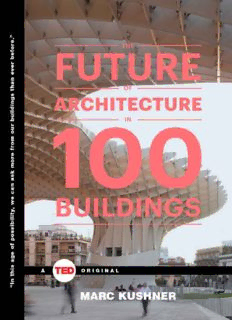
The Future of Architecture in 100 Buildings PDF
Preview The Future of Architecture in 100 Buildings
Thank you for downloading this TED Books eBook. Join our mailing list and get updates on new releases, deals, bonus content and other great books from TED Books and Simon & Schuster. CLICK HERE TO SIGN UP or visit us online to sign up at eBookNews.SimonandSchuster.com CONTENTS Introduction How we chose these buildings EXTREME LOCATIONS REINVENTION GET BETTER POP-UP SHAPE-SHIFTERS DRIVE NATURE BUILDING SHELTER FROM THE STORM SHRINK SOCIAL CATALYSTS FAST-FORWARD Photo Credits Author Thanks About the Author Watch Marc Kushner’s TED Talk Related Talks on TED.com About TED Books Coming Soon About TED Introduction This book wants you to ask more from architecture. You live in a house, you work in an office, you send your kids to a school. These places aren’t just the backdrop to your life, they shape your life—they define who you see, what you see, and how you see it. Architecture impacts how you feel every day, which isn’t surprising considering how much time we all spend inside buildings. The average American, for example, spends 90 percent of their time indoors, yet so many of our buildings leave us without natural light, shelter us with low ceilings, and ignore our personal, social, and environmental needs. It doesn’t have to be like this. We can control this powerful force—we just have to start asking more from our buildings. This architectural revolution is already upon us. The average person is more comfortable having an opinion about architecture today than ever before, mostly due to the dialogue enabled by social media. The world’s 1.75 billion smartphones are fundamentally changing the way architecture is consumed, turning everyone into an architectural photographer. Photographs shared on social media liberate buildings from their geographic locations, enabling a new level of public engagement. We experience architecture today with an unprecedented immediacy, creating fodder for a global conversation about buildings and their impact. This communications revolution is making us all comfortable critiquing the built environment around us, even if that criticism is just “OMG I luv this!” or “This place gives me the creeps.” This feedback is removing architecture from the exclusive purview of experts and critics and putting power into the hands of the people who matter: everyday users. We have started “liking” and hating places out loud. Architects can hear us in real time, which has empowered (and sometimes even forced) them to pursue new ideas—to create solutions that respond to today’s most pressing social and environmental issues.
Description: